- News
- Reviews
- Bikes
- Accessories
- Accessories - misc
- Computer mounts
- Bags
- Bar ends
- Bike bags & cases
- Bottle cages
- Bottles
- Cameras
- Car racks
- Child seats
- Computers
- Glasses
- GPS units
- Helmets
- Lights - front
- Lights - rear
- Lights - sets
- Locks
- Mirrors
- Mudguards
- Racks
- Pumps & CO2 inflators
- Puncture kits
- Reflectives
- Smart watches
- Stands and racks
- Trailers
- Clothing
- Components
- Bar tape & grips
- Bottom brackets
- Brake & gear cables
- Brake & STI levers
- Brake pads & spares
- Brakes
- Cassettes & freewheels
- Chains
- Chainsets & chainrings
- Derailleurs - front
- Derailleurs - rear
- Forks
- Gear levers & shifters
- Groupsets
- Handlebars & extensions
- Headsets
- Hubs
- Inner tubes
- Pedals
- Quick releases & skewers
- Saddles
- Seatposts
- Stems
- Wheels
- Tyres
- Health, fitness and nutrition
- Tools and workshop
- Miscellaneous
- Tubeless valves
- Buyers Guides
- Features
- Forum
- Recommends
- Podcast
review
£1,000.00
VERDICT:
A handsome, comfortable and stable bike, but it could do with better wheels and tyres
Weight:
11,190g
Contact:
At road.cc every product is thoroughly tested for as long as it takes to get a proper insight into how well it works. Our reviewers are experienced cyclists that we trust to be objective. While we strive to ensure that opinions expressed are backed up by facts, reviews are by their nature an informed opinion, not a definitive verdict. We don't intentionally try to break anything (except locks) but we do try to look for weak points in any design. The overall score is not just an average of the other scores: it reflects both a product's function and value – with value determined by how a product compares with items of similar spec, quality, and price.
What the road.cc scores meanGood scores are more common than bad, because fortunately good products are more common than bad.
- Exceptional
- Excellent
- Very Good
- Good
- Quite good
- Average
- Not so good
- Poor
- Bad
- Appalling
With a name that suggests a bit of cityscape excitement, and an overall aesthetic that isn't far away from a traditional flat-bar touring bike, Merida's Crossway Urban 500 promises speed and efficiency. So it's a bit of a surprise to find it actually delivers on comfort and stability, while being short on zest.
- Pros: Classy frame and fork package; faultless Deore drivetrain; excellent ride comfort and stability
- Cons: Ride-deadening wheel and tyre package, climbing and accelerating a little tedious
There's no questioning the Crossway Urban 500's overall sense of balance and stability. Even the very worst urban road surfaces are reduced to little more than momentary annoyances. Helping matters a great deal are the inherently compliant frame and fork, both of which do a grand job at keeping you impervious to road imperfections. When you do hit a patch of smooth tarmac, the Crossway Urban 500's ride quality really shines through and you can cruise sublimely.
> Find your nearest dealer here
In terms of performance, getting up to that cruising speed in friendly or at least benign conditions is simple enough, and the same can be said for maintaining momentum on the flat. Descents are dealt with easily, balance in corners is good, and overall ride quality is reliable if a little uninspiring. Essentially, then, when the environment is in your favour, there's little to complain about.
However, as soon as your luck changes and you hit a hill or a headwind or just want to sprint, the sense of speed or efficiency feels like it washes away. When the going gets tough, this Crossway Urban 500's ability to embrace forward motion goes missing. There are times when riding the Crossway Urban 500 feels a little bit like driving with the handbrake on.
With no rubbing between the disc rotors and callipers, tyre pressures near maximum, and no telltale sounds of inefficiency coming from the bike, the question is: what causes this tendency to turgidness?
Frame and fork
Let's start with the frame and fork, a supremely handsome package finished in a classy metallic and reflective red. The aluminium frame's welds are neat and tidy and despite the Crossway Urban 500's overall traditional feel, there are also some novel little flourishes. The chainstays are flattened, the head tube is tapered, and – no, your eyes aren't deceiving you – there's a subtle kink towards the bottom of the seat tube. Considering there's more than enough room for the fitted rear mudguard, I have no idea quite why the tube needs that little curve.
The fork is also a step away from tradition, being made of carbon fibre with smart through-routing for the front brake, and also comes fitted with a mudguard.
In terms of further accessories, mounts for a rack can be found at the rear triangle, while only one set of bottle cage bosses are specified, which struck me as rather odd considering the bike looks like it could make a near-perfect fast flat-bar touring bike.
Position and geometry
As I've said, there is a relatively traditional feel to the overall shape, with a gently sloping top tube and seatstays that join at the seat tube/top tube junction. Being a solid six-footer, I rode an M/L size Crossway Urban frame and it fitted very nicely, albeit with a fair length of seatpost showing. Reach was spot on, though, and the riding position is neutral – feeling neither too high nor too head-down aggressive.
Probably of most note are the bike's wheelbase and chainstay lengths. Both are longer than those found on most similar bikes, such as the Giant Fastroad or Trek FX, and just about on a par with the Specialized Sirrus. This overall sense of length might have some bearing on the bike's benign-cum-ponderous performance – you do feel like you're pulling a fair bit of bike behind you when you get out of the saddle.
One thing that can't be blamed is weight, which at just over 11kg with kickstand and mudguards is not playing an unduly negative role in the battle against inertia.
Gears and brakes
The Crossway Urban 500's mechanical components also do their best to promote speed. Groupset connoisseurs might argue about the refined delights found further up Shimano's off-road and leisure range, but for reliable and more-than-smooth-enough daily use, the Deore drivetrain found here is just about perfect. Gear changes are positive and secure, and everything just works. The Deore chainset is such a well-integrated piece of work I had to check it was a double rather than a 1x system – the inner ring being almost hidden.
Although scrubbing off speed is – at times – the least of this bike's problems, the Crossway Urban 500's disc brakeset is still worth mentioning. The MT-200 hydraulic disc brakes are some of Shimano's lower-end offerings and they tend to feel just a smidge more spongy or less positive then any sibling components beginning M3xx. However, compared to rival products from, say, Tektro, they're very assured and slowing or stopping is never anything less than certain.
Finishing kit
Normally on a practical multi-use bike, a set of 35mm tyres would be a fair enough speccing choice. But this isn't a multi-use bike, it's an urban bike, and I think a fair chunk of the bike's lack of dynamism can be attributed to the wide Maxxis Overdrive II rubber and lifeless Merida/Joytech wheels.
Yes, the tyres add to the surefooted sense of road handling, but they also seem to really deaden the ride. Grip is obviously a good thing, but with Shimano's well-modulated discs regulating speed, and the frame inherently stable and comfortable, the Crossway Urban is already a very benign machine. These tyres and the nondescript wheelset seem to only further subdue the overall ride quality unnecessarily. A set of semi-slick 32mm or even 28s would add a well-needed touch of enthusiasm.
The other contact points are at best OK. While the frame is rather impressive at isolating road buzz and even big bumps and ridges, the Merida Crossway Comfort saddle isn't actually all that comfortable and the available support isn't placed where it is most needed. The Merida Ergo grips are better, being well-shaped but they also become a touch firm after prolonged use.
Value
I've taken some manufacturers to task recently for offering relatively poor value for money on a couple of their entry-level hybrids (read my reviews of the Sirrus Alloy and the CrossTrail Sport), so it's only fair to hold Merida to the same standard.
What can you get for £1,000 from other global brands? Trek's FX Sport 4 comes with an alloy frame, carbon frame, Shimano Tiagra drivetrain and Shimano MT-201 disc brakes, and costs £950. Giant's Fastroad SL1 features a similar spec, albeit with TRP discs, and costs £949. And Specialized's Sirrus Elite has an alloy frame, carbon fork, Tiagra/Praxis Alba/microSHIFT Centos mix drivetrain and TRP Flow Set Control brakes for a round £1,000.
> Buyer's Guide: 6 of the best 2019 new-generation hybrids
So although Merida has opted for Shimano's off-road range with its Deore setup rather than the road-based Tiagra systems found on rival models, overall quality is very much in the right ballpark and value for money is fair. You will easily find better deals by shopping around and considering other smaller brands, but this is not an unreasonably priced bike.
Conclusion
Ultimately, the Crossway Urban 500 might end up being a little less attractive than first impressions suggest, but its overall spec is more than decent, and comfort and road-holding are very good. As I said at the start, its name conjures up some kind of inner city speed machine and its overall aesthetics suggest a refined and efficient traditional ride quality, and if you're looking for just a bit of excitement or inspiration to push on harder then it does come up a little short. It delivers on comfort and stability, but change the wheels if you want more zest.
Verdict
A handsome, comfortable and stable bike, but it could do with better wheels and tyres
road.cc test report
Make and model: Merida Crossway Urban 500
Size tested: M/L
About the bike
List the components used to build up the bike.
Merida lists:
Frame: 6061 double butted aluminium
Fork: Crossway Urban CF2 carbon-fibre
Brakes: Shimano MT-200 hydraulic disc
Front derailleur: Shimano Deore
Rear derailleur: Shimano Deore Shadow
Shifters: Shimano Deore
Chainset: Shimano Deore
Bottom bracket: Shimano BB52 BSA
Wheel rims: Merida Urban
Wheel hub (f): Joytech XD791SB
Wheel hub (r): Joytech D142TSE
Tyres: Maxxis Overdrive II 35mm
Handlebar: Merida Comp CC aluminium
Stem: Merida Expert CC aluminium
Headset: Merida M2339 Neck
Seatpost: Merida Comp CC aluminium
Saddle: Merida Crossway Comp
Grips: Merida Crossway Ergo
Extras: Front and rear mudguards, kickstand, pedals
Tell us what the bike is for and who it's aimed at. What do the manufacturers say about it? How does that compare to your own feelings about the bike?
This is a bike aimed at commuters and urban riders.
Merida doesn't says much other than it is: "Fast, stylish and contemporary."
I'd agree with fast and stylish – at least in spirit – but not sure about contemporary. It looks rather traditional to me.
Where does this model sit in the range? Tell us briefly about the cheaper options and the more expensive options
The 500 sits very near the top of the Crossway Urban range – only the XT model has a higher spec. Below, there are the 300, 100, 40D and 20D models.
Frame and fork
Overall rating for frame and fork
9/10
Tell us about the build quality and finish of the frame and fork?
Very nicely made frame, quite a sexy (for an urban hybrid) fork with internal routing.
Tell us about the materials used in the frame and fork?
Double-butted 6061 aluminium for the frame, carbon fibre for the fork.
Tell us about the geometry of the frame and fork?
Fairly traditional/old-school geometry, with a gently sloping top tube and long wheelbase and chainstays.
How was the bike in terms of height and reach? How did it compare to other bikes of the same stated size?
The M/L model fitted me (6'0) well, albeit with a fair amount of seatpost showing.
Riding the bike
Was the bike comfortable to ride? Tell us how you felt about the ride quality.
Yes, comfort is one of its strongest points, smoothing rough road surfaces and even soaking up bumps.
Did the bike feel stiff in the right places? Did any part of the bike feel too stiff or too flexible?
It didn't feel particularly flexible, although, equally, there was no sense of undue stiffness.
How did the bike transfer power? Did it feel efficient?
When you really needed or wanted to make the bike move, it tended to feel fairly unwilling. You could coax it up to cruising speed on the flat well enough, but sprinting or climbing was tough.
Was there any toe-clip overlap with the front wheel? If so was it a problem?
No.
How would you describe the steering? Was it lively neutral or unresponsive? Neutral.
Tell us some more about the handling. How did the bike feel overall? Did it do particular things well or badly?
No complaints with handling – no surprises and everything felt reliably direct. It's not a fast-reacting lively machine, though.
Which components had the most effect (good or bad) on the bike's comfort? would you recommend any changes?
I'd fit a different saddle.
Which components had the most effect (good or bad) on the bike's stiffness? would you recommend any changes?
New wheels.
Which components had the most effect (good or bad) on the bike's efficiency? would you recommend any changes?
New wheels and tyres to unlock more positive potential from the frame.
Rate the bike for efficiency of power transfer:
6/10
Seemed decent enough in normal conditions, but found wanting when you wanted to put more power down.
Rate the bike for acceleration:
5/10
Not particularly responsive but OK if you keep the acceleration steady.
Rate the bike for sprinting:
5/10
Not exciting at all when accelerating.
Rate the bike for high speed stability:
9/10
Stability is very good.
Rate the bike for cruising speed stability:
9/10
Again, very good.
Rate the bike for low speed stability:
8/10
Rate the bike for flat cornering:
7/10
Not bad at all – position is neither high nor head-down, so cornering ability is middling to good.
Rate the bike for cornering on descents:
8/10
Deals with high-speed descents very smoothly.
Rate the bike for climbing:
3/10
Didn't enjoy climbing on this bike at all.
The drivetrain
Rate the drivetrain for performance:
9/10
Shimano Deore drivetrain is almost faultless – secure shifts, sensible gearing, all-round reliability.
Rate the drivetrain for durability:
8/10
Should last.
Rate the drivetrain for weight:
7/10
Not the lightest but fair for this market.
Rate the drivetrain for value:
8/10
Excellent quality and performance.
Tell us some more about the drivetrain. Anything you particularly did or didn't like? Any components which didn't work well together?
Deore chainset is a nice bit of manufacturing. Deore Shadow rear derailleur keeps chain operation smooth.
Wheels and tyres
Rate the wheels for performance:
2/10
These wheels and tyres really deaden the ride.
Rate the wheels for durability:
6/10
Should last, not that you'd want them to.
Rate the wheels for weight:
5/10
Only fair at best.
Rate the wheels for comfort:
6/10
They don't affect comfort negatively.
Rate the wheels for value:
5/10
Although I particularly dislike these, most wheels at this price are relatively low-end items.
Tell us some more about the wheels.Did they work well in the conditions you encountered? Would you change the wheels? If so what for?
They seem to completely deaden the ride and discourage any kind of enthusiasm in what is already a fairly sensible rather than lively bike.
Rate the tyres for performance:
5/10
Very good grip but at 35mm, too much rolling resistance.
Rate the tyres for durability:
8/10
Will last well, especially if you take them off and hang them in the garage.
Rate the tyres for weight:
5/10
Average.
Rate the tyres for comfort:
8/10
Decent comfort.
Rate the tyres for value:
4/10
Should possibly find better on a bike at this price.
Tell us some more about the tyres. Did they work well in the conditions you encountered? Would you change the tyres? If so what for?
I'd swap in some 32mm or 28mm slicker tyres to try to perk up the ride quality.
Controls
Rate the controls for performance:
9/10
All good.
Rate the controls for durability:
8/10
Rate the controls for weight:
9/10
Rate the controls for comfort:
7/10
Grips are initially nice to use, but feel firm after a long stint.
Rate the controls for value:
7/10
Anything else you want to say about the componentry? Comment on any other components (good or bad)
Shimano MT-200 disc brakes are a great feature – secure speed regulation and reliable stopping power. Saddle is a bit tough – a quick change to something else.
Your summary
Did you enjoy riding the bike? Sometimes
Would you consider buying the bike? With speccing changes.
Would you recommend the bike to a friend? With speccing changes.
How does the price compare to that of similar bikes in the market, including ones recently tested on road.cc?
Compared to other global brands, the price is fair. Trek's FX Sport 4 comes with an alloy frame, carbon frame, Shimano Tiagra drivetrain and Shimano MT-201 disc brakes and costs £950. Meanwhile, Giant's Fastroad SL1 features a similar spec, albeit with TRP discs and costs £949. Specialized's Sirrus Elite has an alloy frame, carbon fork, Tiagra/Praxis Alba/microSHIFT Centos mix drivetrain and TRP Flow Set Control brakes for a round £1,000.
Rate the bike overall for performance:
7/10
Rate the bike overall for value:
5/10
Use this box to explain your overall score
In most instances the Crossway Urban 500's ride performance is perfectly acceptable, and comfort is especially good. But it seems to promise so much with its smart frame and excellent build, and at times it seems a little wanting. Overall it's good, but with better wheels and tyres it could be great.
About the tester
Age: 39
I usually ride: Islabikes Beinn 29 My best bike is: 25-year-old Dawes Galaxy
I've been riding for: Over 20 years I ride: Most days I would class myself as: Experienced
I regularly do the following types of riding: commuting, touring, sportives, general fitness riding, mountain biking, leisure
Latest Comments
- alexuk 1 sec ago
Editors choice ...clearly the editor of this rag is coining' it! #Rolling-in-cash!
- MinardiM189 18 min 46 sec ago
I have played Velogames before so will probably go back there too.
- thrawed 23 min 54 sec ago
All leds are off the shelf leds. No bike light ever is making their leds in house, they buy them from manufacturers like cree or nichia etc.
- mdavidford 26 min 26 sec ago
Probably a Suffering Bastard, or perhaps for the Velominati types, an Old-Fashioned. Hopefully not a Rusty Nail, anyway....
- mdavidford 35 min 53 sec ago
Which is nonsense. For starters, if you're getting the assistance at lower speeds, then when the speed goes up you'll be fresher, and likely to be...
- pnedr1962 36 min 38 sec ago
Thanks to everyone who made this the best cycling fantasy game I've come across. I dropped out last season after deciding it was just to addictive....
- Eton Rifle 39 min 29 sec ago
There must be something other than the sales fall driving the collapse in profit, yet the article doesn't mention anything else. A revenue loss of...
- the little onion 1 hour 12 min ago
My favourite team was the Agritubel-Gerolsteiner-Saeco-Parmalat-CreditAgricole-Segafreddo-Soudal-Quickstep-Mapei-FassaBortolo squad.
- brooksby 1 hour 23 min ago
I presume that you have to register and set up an account first? So you'd have to know what app was being used in the particular town or area or...
- joe9090 1 hour 24 min ago
That is not Shoreditch that is Haggerston. Thanks for mansplaining the rest of it. Totally useless post.
























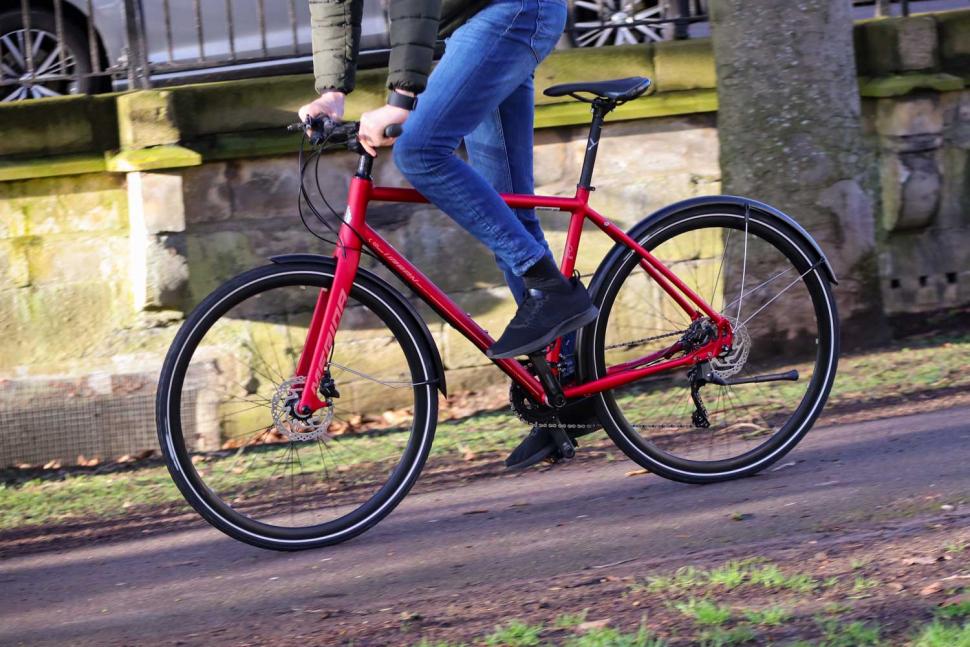

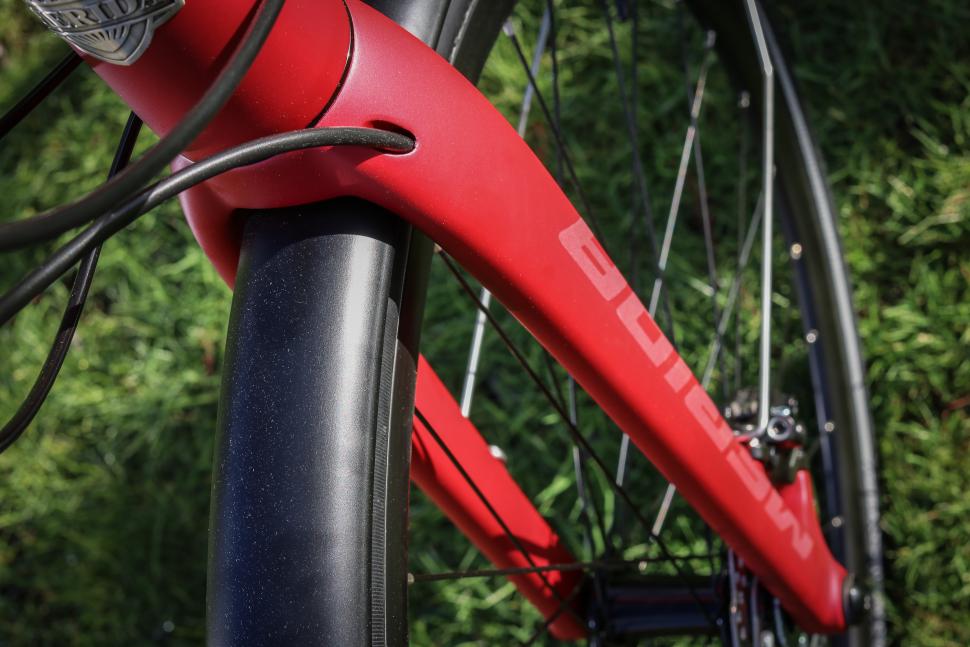


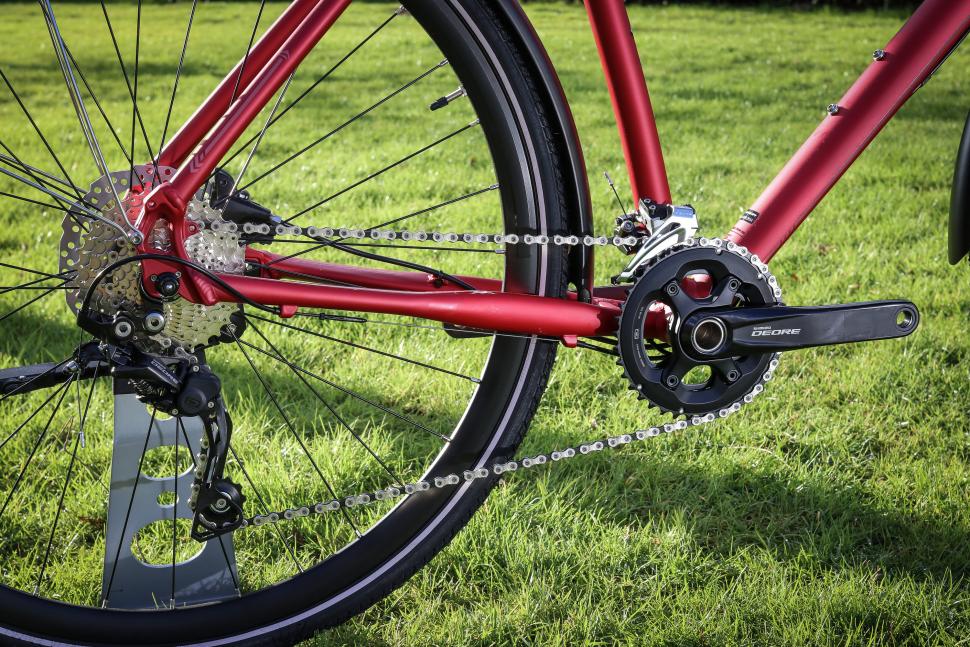
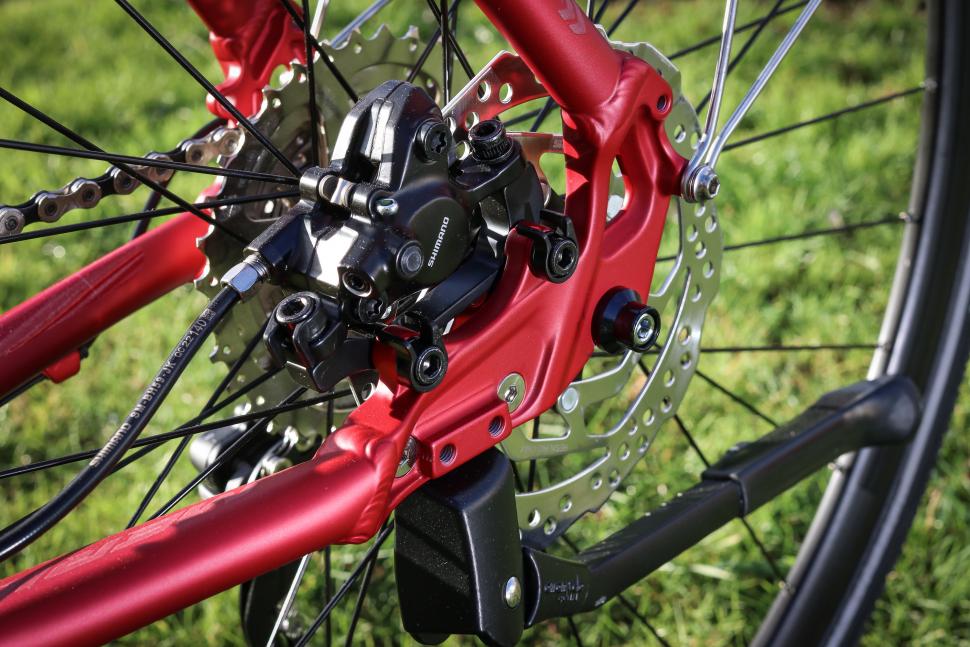
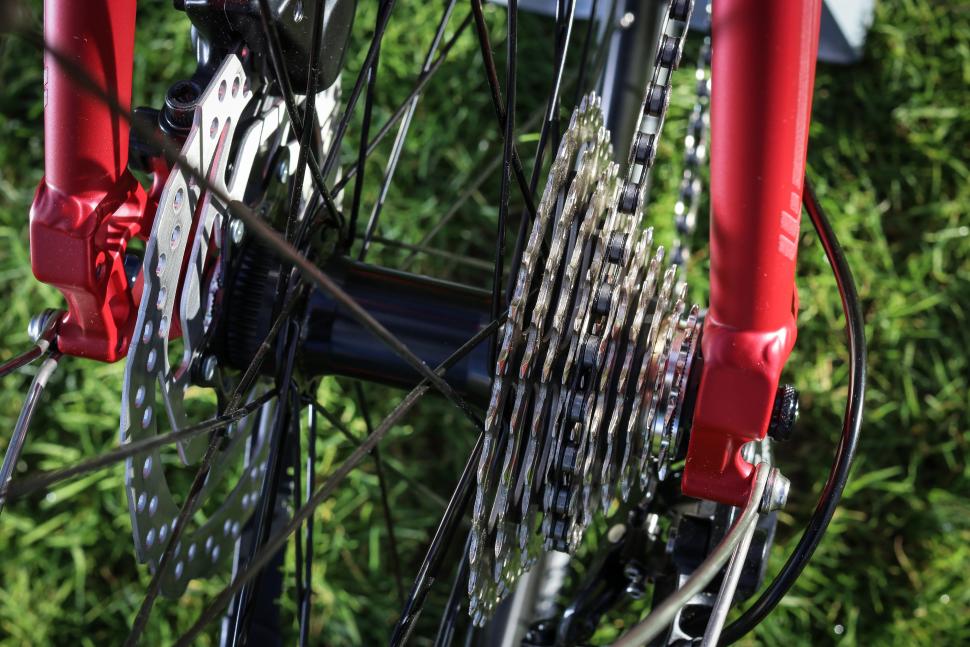

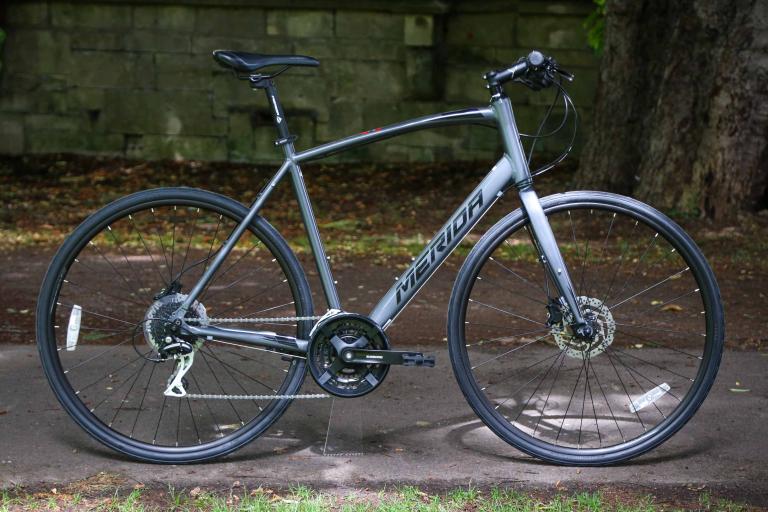
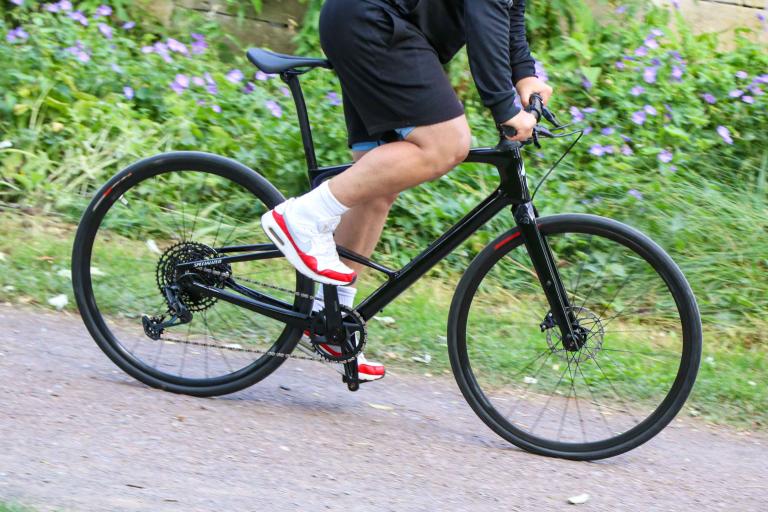

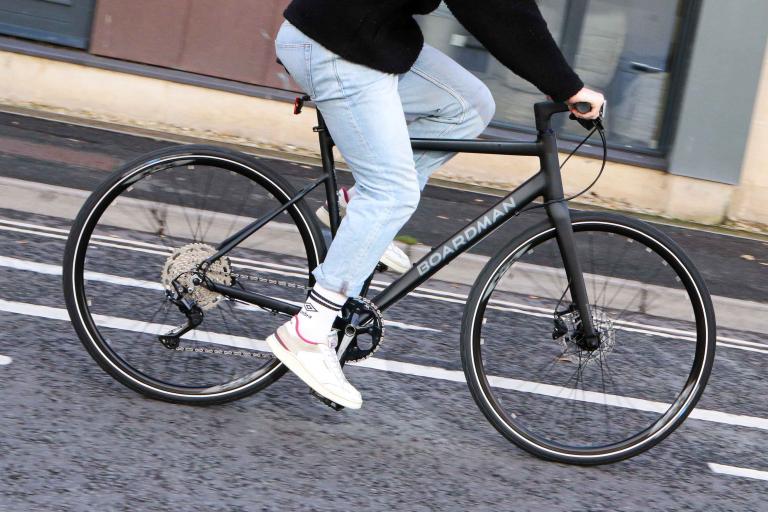
Add new comment
8 comments
Crr at the same absolute tyre drop ('comfort level' in the test) is basically the same, so you don't need to lose anything, apart from the 25mm tyre which does worse than the others - so that's more grip, better reaction to rougher terrain, less chance of pinch flats and so on, for a marginal gain in weight. [snip]
given the testing at bicyclerollingresistance we know that even on a continual uneven surface that wider tyres are NOT better than narrower at the correct pressures one would use.
So on surfaces that do have some smoothness (even my local town roads are smoother than the rolling resistance rolling road in all but one or two areas), the narrower tyres are going to have even more advantage, the testing between the 23-32mm conti 5000 should put this bullshit to bed once and for all regarding wider tyres being faster!!
gp5k recommended.JPG
Or... For the grand total of a watt per tyre I can go to 32-622 and gain a buttery smooth ride resulting in lower fatigue overall meaning I can ride faster for longer.
I'm actually shocked that 32s came so close to the 23s.
"buttery smooth", in your opinion, at those relatively high pressures for the load stated that's not going to be so. In fact the pressures given for the weight should be about 65 rear and 41 front using a 60/40 balance, that will give you a more comfortable ride but a higher crr than the table actually indicates and not taking into account that no-one rides on continuous rutted roads, nor indeed the extra drag from the wider tyre).
I ride a 32 on the rear of my commuter (I bought 8 for £40 and am down to the last 2) and a 33.3 (nominally 32mm) on my audax/tourer/winter ride, decent level 32s at that not slugs and the fronts are 28mm folders also of decent quality. I've ridden both bikes with narrower and indeed wider (42mm folding), the 42mm was more comfortable but it was devilishly slow, comfort, sure, maybe a smidge but at the higher pressures required to get any comparison to a narrower tyres, it's simply not buttery smooth at all and fatigue on hands or shoulders is not any less. I also happen to have two shoulder injuries including a bad one from rugby almost 20 years ago plus I have aches/stiffness in my right hand from when I was knocked off by a pedestrian and farked my carpal bones breaking my fall, so I know when I've had comfortabke rides or not and unless you really drop the pressures of the wider tyres you're not getting a buttery ride at all.
I don't see how, on level ground,wider, heavier tyres are going to be as fast as lighter narrower tyres. Bearing in mind that on each revolution, a tyre has to be accelerated from standstill to twice the rider's speed and back to standstill, it is going to require more energy to keep a bike moving on wide tyres than it does on narrow tyres.
Neither my mountain bike nor my tourer are as fast as my road bike and there is nothing subjective about that because I see the result on the bike computer AND my daughter is well aware of the difference in trying to keep with me on my tourer (28mm Conti Top ContactII 460gm) and my road bike (23mm Conti GP4000II 200gm).
There'll be a trade-off between rolling resistance, aerodynamics, inertia and, depending on the surface conditions, how the power is transmitted to traction against the road. At various extremes the answer will be obvious, in the context of typcial road tyres perhaps not so straightforward...
On a billiard smooth road, narrower is betterm but as the surface gets rougher, wider tyres are faster (the way they fold at the compression point takes away less rolling energy), and because you can run them at lower pressures, the impacts (even from the small stones in tarmac) simply get absorbed by the tyre instead of the bike, and you, having to contantly go 'up and down' to get over them - the result being a smoother ride and more of your momentum is maintained in the forward direction.
As for you mountain bike, tourer and road bike, I suspect your not comparing like for like. Mountain bike has tyres with massive knobs perhaps, and does your tourer have tougher tyres to take the load and reduce punctures?
Do a search online for tests of different size tyres of the same make and model.
Are you really recommending that this bike would benefit from some 28mm tyres? And there I was thinking that we'd all gotten past the now pretty firmly debunked thinking of narrower is better.
I'm not surprised the stock tyres aren't really up to it speed and ride quality wise - merida have clearly gone for the more robust option, but surely you just need to swap them out for some lighter weight 35c tyres, of which there are now loads of choice thanks to the adventure/gravel explosion.
Maybe, dare I say, it should in fact come fitted with some 650b wheels and some wtb horizon or similar tyres. Why? Simple - this is what I fitted recently to my commuter and it's brilliant now that I don't have to worry so much about road surface quality/pot holes, and yet the bike is still really fast and agile.